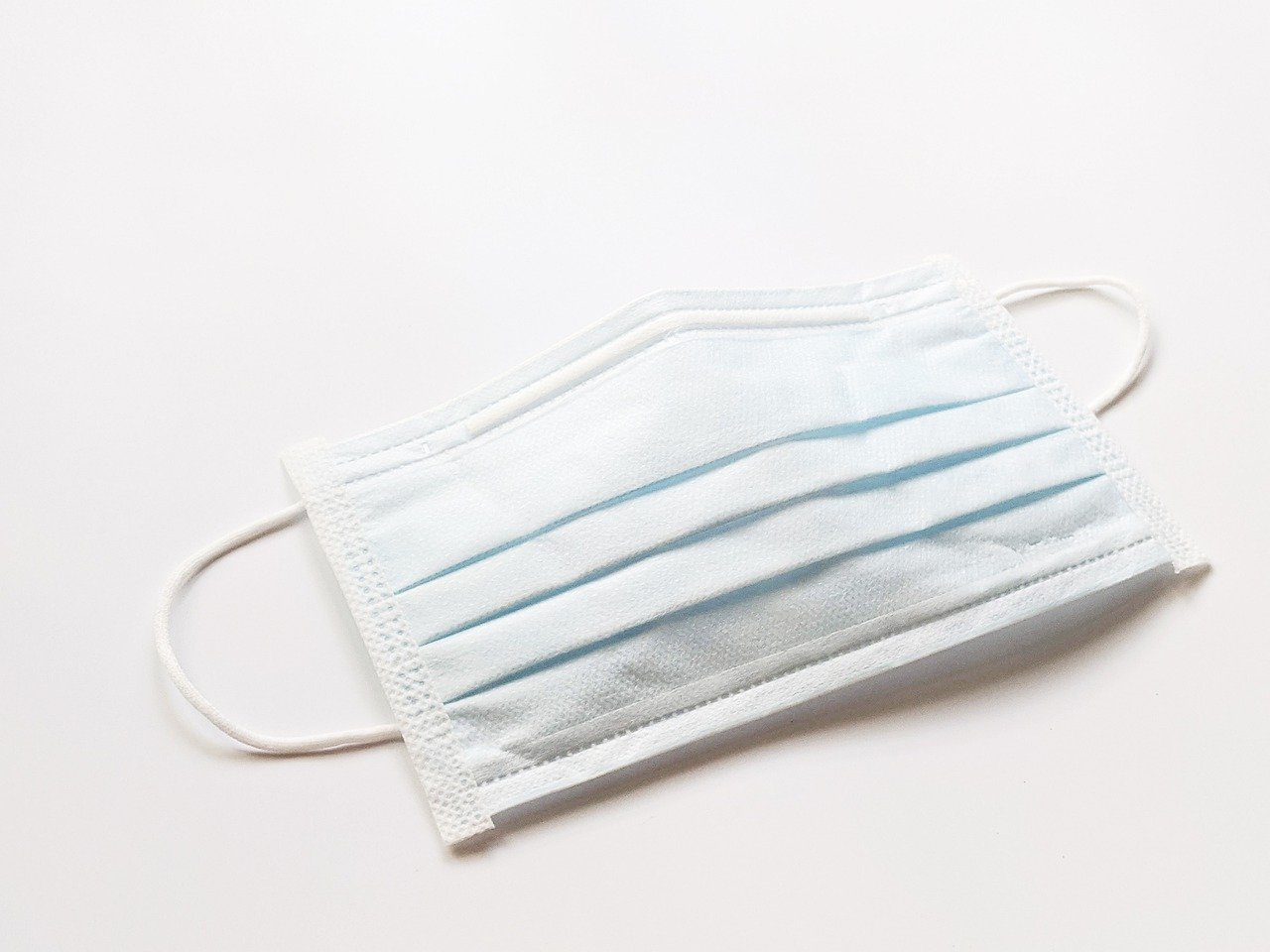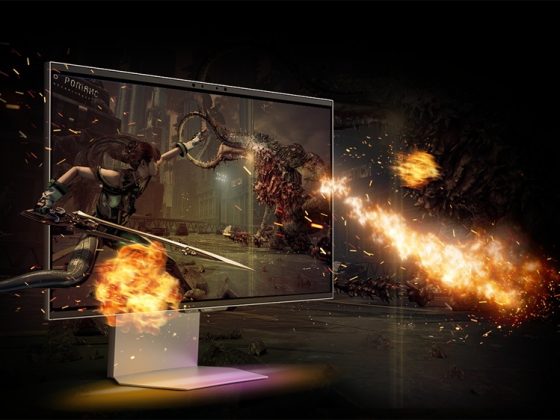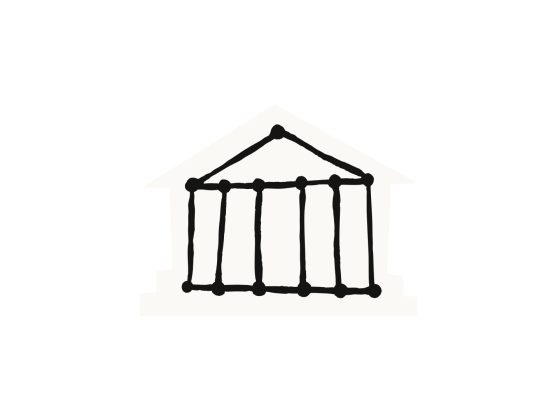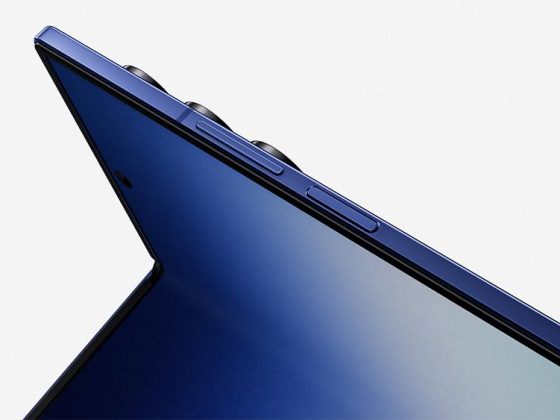The R&D ecosystem in Singapore has been studying various measures that can help support the safe reopening of the economy as we open up in phases. On top of current safe management measures such as wearing of mask, maintaining safe distancing, limiting social contacts and observing good personal hygiene, these additional solutions will help support a safer resumption of activities.
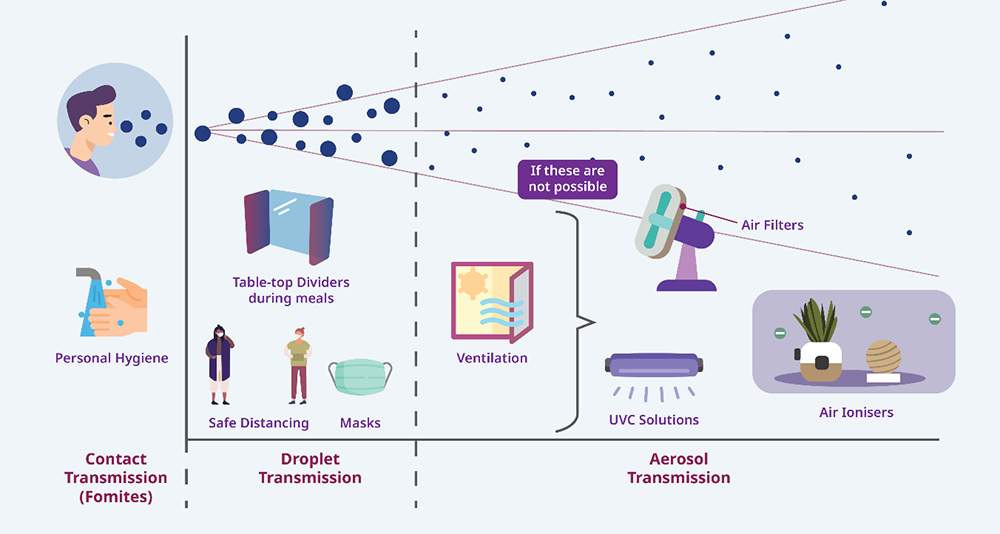
Picture 1: Overview of preventive measures to reduce fomites, droplet and aerosol transmission
Temasek Foundation, the Agency for Science, Technology and Research (A*STAR) and other research partners such as ITE College East and Temasek Life Sciences Laboratory (TLL), have done extensive scientific studies in collaboration with public agencies, and gleaned insights which could be useful in further reducing the risk of COVID-19 transmission.
Businesses, organisations, as well as families and individuals can explore such insights and customised solutions that best fit their needs and circumstances at work, at play or at home, to supplement the current safe management measures. This is particularly important at a time when various countries and regions around the world are experiencing widespread infections, or second and third waves of the outbreak.
As new COVID-19 variants from the UK, South Africa and Brazil are uncovered, we must not let our guard down even as we strive to re-open our economy. This is especially so given the possibility that these new variants may be more infectious1 than before.
Major modes of COVID-19 transmission and common safety measures
COVID-19 is largely transmitted via respiratory droplets from close interactions with an infected person over extended periods or accumulated from repeated contacts throughout a day. Such interactions would include speech, singing, shouting, and can be exacerbated when the infected person sneezes or coughs into someone else’s face.
To mitigate the risk of large community clusters, it is useful to restrict numbers of people we meet in a day through measures like work from home or limiting the number of people visiting each other. This is one way to create firebreaks to reduce chances for the virus to light an exponentially growing outbreak which we have seen in some countries across the world.
As infected people could be asymptomatic, the wearing of face masks is also essential in protecting ourselves and others. With the two-way protection of face masks, we reduce the overall viral load in the community.
Droplets eventually fall on objects or surfaces to become fomites, which may be contaminated by infectious materials. We can become infected when our hands transmit such fomites to our eyes, nose and mouth, where the virus can take hold of and enter our respiratory system. This is why we encourage regular cleaning of high-touch surfaces and regular hand washing for individuals.
In addition, tiny droplets, known as aerosols, may be formed under certain conditions and stay suspended in the air for hours or be carried by wind or currents from air-conditioners or fans for some distances. This is especially risky in small poorly ventilated spaces, including small spaces using split unit air conditioners which simply recirculates any infected air around and allow infectious particles to build up over time without any regular or frequent change of fresh air.
Unlike most mass transportation modes which have varying rates of air changes and high-performance filter systems in their air conditioning and filtration systems, most automobiles and cars do not have sophisticated air cleaning systems and can be venues of high risk especially if there is prolonged contact.
Hence, drivers of automobiles and other small vehicles are encouraged to open their windows a little to enable continual fresh air inflow and air change in order to reduce transmission risks2. This will help prevent viral loads from accumulating in such vehicles, especially when the drivers and passengers do not belong to the same household.
Research on safety measures against COVID-19 transmission risks
With the combined efforts from A*STAR’s Institute of Materials Research and Engineering (IMRE) and Institute of High Performance Computing (IHPC), tests have been conducted in various venues such as public transportation, concert theatres, offices and eateries. The research team has actively partnered several public agencies, private sector companies and institutes of higher learning in studies related to droplet and aerosol transmission under different environment settings. For instance, A*STAR worked with the Land Transport Authority (LTA) to model the dissemination of aerosols in public transportation, and developed recommendations to reduce the spread of aerosols. Similar works have been carried out with the Singapore Tourism Board (STB) to facilitate the safe resumption of meetings, incentives, conferences and exhibitions (MICE) activities.
Mitigating COVID-19 transmission risks
Apart from the above solutions and baseline practices, research findings from the scientific community can enable other preventive or COVID-safe measures as additional layers of defence to reduce transmission risks through fomite, droplet and aerosol routes.
For example, solutions can be employed to improve air quality such as the use of air filters or air ionisers to clean the air in enclosed and poorly ventilated spaces. While safe distancing remains key to reducing risks of transmission, measures such as table-top dividers can be useful during higher risk activities such as eating when masks are removed. It is important to note that these solutions should be used in parallel with regular sanitisation of surfaces to reduce fomite transmission.
Whilst these solutions provide useful scientific evidence, they are based on experimental simulations that may not fully reflect other factors in the real world such as human behaviour. These findings, together with local outbreak investigation data, international research and lessons learnt from other countries, are used to inform public health measures.
- Ventilation in spaces to reduce droplet and aerosol transmission –A*STAR’s airflow modelling and simulation studies showed that the spread of droplets and aerosols are greatly dependent on different types of ventilation environments, hence there are various risk levels associated with different venues which require different preventive measures to ensure safe management practices.For instance, air curtains in certain venues are effective in preventing aerosols from spreading, while split air-conditioners could recirculate unfiltered air, which under some conditions might allow aerosol contaminants to build up over time.Based on these studies, customised innovations can be applied to complement safe management measures to reduce the spread of aerosols. Various settings have been modelled through a combination of on-site tests and advanced computational modelling studies, while factoring in environmental conditions such as wind speed and direction, humidity levels and ambient air temperatures, as well as ventilation levels in indoor spaces.
- Air ionisers and air filters are useful in poorly-ventilated indoor spaces –A*STAR’s scientific study3 has confirmed the effectiveness of plant and natural fibre ionisers, and air filters in reducing aerosol concentrations in the air.Findings include the type and numbers of such plant and natural fibre ionisers and air filters within rooms of specified sizes, to achieve a desired equivalent rate of air change, and thus lower risk of transmission from infectious aerosols. It should be noted that unlike air filters which trap the aerosols, plant and natural fibre ionisers will cause the aerosols and droplets to stick to surfaces such as the floor and on walls and surfaces and hence may increase the risk of fomite transmission, unless surfaces are cleaned regularly and thoroughly as well.
- Reducing droplets transmission using table-top dividers –Studies have been done on the effectiveness of various designs and heights of dividers. These were based on the findings from a combination of on-site tests in food court settings and advanced computational modelling, which factored in environmental conditions and the different dimensions and types of dividers.Dividers are not a replacement for safe distancing measures, rather, to complement the existing safety measures in place. To reduce the risk of fomite transmission, dividers should also be sanitised regularly, and the ventilation of the venue should be enhanced as well. Where communication needs to take place across dividers, audio holes covered with Mylar films can enhance sound transmission while still limiting aerosol spread.
- Disinfecting surfaces using UVC solutions –Recommendations on effective and safe UV disinfection to inactivate different types of viruses and bacteria were also derived from research. This includes parameters such as exposure time and intensity from UVC sources, safe zones for humans and the use of robots and automation to make such processes safer.It should be noted that the typical UV lamps (i.e. 254 – 280nm) are not eye or skin safe, and additional precautions are needed to prevent direct exposure to people, e.g. with ceiling level solution shielded from line of sight for people. Alternatively, solutions can be found to toggle UVC sterilisation in the absence of people, such as in toilets or other specific facilities. Those operating UVC devices should wear appropriate PPE and UV-resistant eye goggles; these solutions are not advised to be used in homes.
Detailed findings and recommendations on the various additional safety measures are available in ANNEX A.
Prof Tan Chorh Chuan, MOH’s Chief Health Scientist said: “COVID-19 is very contagious and the virus can spread through different routes. With targeted multidisciplinary research, we can better understand how such transmission may occur in different settings. In turn, this helps us to improve the effectiveness of different preventive and safe management measures to reduce the risk of viral spread.”
Ms Koh Lin-Net, Chief Executive, Temasek Foundation Nurtures, said: “Wearing masks, practicing hand hygiene and keeping safe distancing have become norms. But as the situation continues to evolve, we must also continue to add to our knowledge base. These would not just be useful to reduce COVID-19 transmission risks, but will also give us toolkits which could help reduce our risks during the next unknown Disease X which could have aerosol as its main route of transmission.”
Ms Koh noted, “We are highly privileged to have the opportunity to partner with the Agency for Science, Technology and Research (A*STAR) and other research partners, including ITE College East and Temasek Life Sciences Laboratory (TLL), who have provided answers to some of our questions on additional measures to take, especially in dealing with aerosols. We would like to share this with the wider public, so that we can collectively build a foundation for our future generations to stay prepared, and safeguard our community in the event of a future outbreak.”
Professor Alfred Huan, Assistant Chief Executive, Science & Engineering Research Council, A*STAR, added “One of the pre-conditions for entering phase 3 of reopening our economy is the adherence to safe management measures.”
Prof Huan explained, “By employing a science-based approach to the design of safe management measures, we are able to assess the risks of transmission and advise tangible preventive measures that are built on the foundation of scientific evidence. The multi-disciplinary expertise from across the local research ecosystem leveraged in these studies, make them very valuable for public agencies and businesses.”
Scientists from across Singapore’s research ecosystem continue to work towards increased modelling and empirical methods in these series of studies. Working under the guidance of the Ministry of Health’s Chief Health Scientist, Professor Tan Chorh Chuan, this network of scientists has been researching how transmission of COVID-19 could occur and how much spread could be mitigated. These studies will help to bolster the safe opening of Singapore’s economy and society through the implementation of robust preventive measures.
Project Safeguard is an educational initiative by Temasek Foundation aimed at raising public awareness about such scientific findings from our local R&D ecosystem, plus potential solutions to help reduce the risk of COVID-19 transmission as we carry on economic and social activities.
For more information on Project Safeguard, visit stayprepared.sg/safeguard.
For more information on research findings by A*STAR, visit here.
About Temasek Foundation
Temasek Foundation supports a diverse range of programmes that uplift lives and communities in Singapore and beyond.
Temasek Foundation’s programmes are made possible through philanthropic endowments gifted by Temasek, as well as gifts and other contributions from other donors. These programmes strive towards achieving positive outcomes for individuals and communities now, and for generations to come.
Collectively, Temasek Foundation’s programmes strengthen social resilience, foster international exchange and regional capabilities, advance science, and protect the planet.
For more information, visit www.temasekfoundation.org.sg.
About Stay Prepared Programmes
Stay Prepared helps to prepare the Singapore community for emergencies like major accidents, natural disasters, pandemics, severe haze or terrorist attacks. It is supported by the Temasek Emergency Preparedness Fund, managed by Temasek Foundation.
About the Agency for Science, Technology and Research (A*STAR)
The Agency for Science, Technology and Research (A*STAR) is Singapore’s lead public sector R&D agency, spearheading economic-oriented research to advance scientific discovery and develop innovative technology. Through open innovation, we collaborate with our partners in both the public and private sectors to benefit society.
As a Science and Technology Organisation, A*STAR bridges the gap between academia and industry. Our research creates economic growth and jobs for Singapore, and enhances lives by contributing to societal benefits such as improving outcomes in healthcare, urban living, and sustainability.
We play a key role in nurturing and developing a diversity of talent and leaders in our Agency and research entities, the wider research community and industry. A*STAR’s R&D activities span biomedical sciences and physical sciences and engineering, with research entities primarily located in Biopolis and Fusionopolis. For ongoing news, visit www.a-star.edu.sg.
About the Institute of Technical Education (ITE)
The Institute of Technical Education (ITE) was established as a post-secondary institution in 1992, under the Ministry of Education. ITE is a principal provider of career and technical education and a key developer of national skills certification and standards skilling Singapore for the future economy. It offers three key programmes – (1) Pre-Employment Training for youths after secondary education (2) Continuing Education and Training for adult learners and (3) Industry-Based and Work-Study Programmes with employers. Under its ‘One ITE System, Three Colleges’ Governance Model, ITE has three Colleges – ITE College Central, ITE College East and ITE College West. For more information, please visit our website at https://www.ite.edu.sg.
About Temasek Life Sciences Laboratory (TLL)
Established in 2002, Temasek Life Sciences Laboratory (TLL) is a beneficiary of Temasek Trust. Its vision is to build a permanent organisation of global talent to undertake bio-molecular science research and applications to benefit people in Asia and beyond. The research institute focuses primarily on understanding the cellular mechanisms that underlie the development and physiology of plants, fungi and animals. TLL’s research provides new understanding of how organisms function, which forms the foundation for biotechnology innovation. For more information, please visit www.tll.org.sg.
ANNEX A
Scientific Findings from Studies on Preventive Measures
- Ventilation in Spaces to reduce droplet and aerosol transmission
- Different types of ventilation environments will affect the transmission of droplets and aerosols. For example, central air conditioning systems provide fresher air due to the regular infusion of fresh air, and the presence of a high efficiency filter helps to further purify the air. In comparison, split unit air conditioning systems recirculate the air with less efficient filtration, therefore providing a less well-ventilated indoor space.Scientists from A*STAR’s Institute of Materials Research and Engineering (IMRE) and Institute of High Performance Computing (IHPC) have worked with various public agencies such as the Land Transport Authorities (LTA) to study the flow of aerosols on public transport, and the Singapore Tourism Board (STB) to facilitate the safe resumption of M.I.C.E. activities. Every 6 minutes4, all the air in a train will be changed out5. That is excluding the opening and closing of the train doors.
- Air ionisers and air filters can help reduce aerosols from the air in enclosed or poorly ventilated indoor spaces
- Devices such as plant and natural fibre ionisers, as well as air filters, were found to be useful in minimising aerosol concentration in the air. The technology behind the ionisers were discovered by Temasek Life Sciences Laboratory (TLL). These ionisers allow a lower risk of transmission depending on the quantities of such ionisers and air filters within rooms of specified sizes.
- While masks are able to provide high coverage of aerosols, they do not eliminate the spread of aerosols, thus ionisers and air filters have been found to be useful in minimising the presence of aerosols in the air. In particular, the following three devices were found to be effective:
- Ioniser (Plant-based) Potted plants (watered) fitted with electronic ioniser devices, to enable them to emit ions from their leaves. A*STAR’s Institute of Materials Research and Engineering (IMRE), together with Temasek Life Sciences Lab, found that a large ioniser plant is able to cover a wide area of up to 30m3.In a room with air circulation, the plant’s location does not affect its efficacy within the space as the air circulation helps to distribute the ions.
- Ioniser (Natural Fibre) Natural fibre ropes coiled into a ball of less than 20cm in diameter, perched on a stand containing a negative ion stimulator. It works along the same principles as plant-based ionisers – to generate ions which charge up aerosols and cause them to be deposited on the walls and floors as fomites, rather than remaining in the air.
- Equivalent rate of Air Changes per Hour (ACH) With the presence of plant or natural fibre ionisers, the time taken for aerosols to clear can be reduced to as low as 3 minutes in a 0.5m3 enclosure. In terms of air changes per hour (ACH), natural fibre ionisers yield an ACH of over 20 in a poorly ventilated enclosure, which far exceeds ventilation requirements for hospitals and surgery rooms as well as CDC’s recommendation of 6 for healthcare facilities and isolation wards6. These plant or natural fibre ionisers can be more efficient in clearing aerosol particles than some commercial electro-mechanical ionisers, and are more environmentally friendly as they produce less ozone than traditional ionisers.
- Air Filters Layered antimicrobial filters can be wrapped around the back of fans or air-conditioners, to reduce concentration of aerosols of size less than 0.1 micrometers. A*STAR’s Singapore Institute of Manufacturing Technology (SIMTech) has developed an anti-microbial and water-repellent coating that can be applied on air filters, which demonstrated bacterial filtration efficiency (BFE) of 97% and above, and viral filtration efficacy (VFE) of over 95% and above, as coated. In the studies using the filters, A*STAR Institute of Materials Research and Engineering (IMRE) showed that in a typical office meeting room with the size of about 117m3, the use of two fans fitted with air filters with anti-microbial coating can bring down the time needed to mitigate aerosols from 15 minutes to 10.5 minutes. This is equivalent to an ACH of 8, which effectively keeps aerosol concentration low even if there are constant injections of aerosols into the air (induced by repeated coughing or constant talking).
- As a general reference, the Center for Disease Control and Prevention (CDC) in the USA recommends a minimum ACH of 6 for patient-care areas including hospitals, and a minimum ACH of 10 for isolation wards7.
- Preventing droplet transmission using table-top dividers
- In addition to safe distancing measures, table-top dividers can be used to reduce the exchange of speech droplets and provide a safer environment when people remove their masks for meals. These dividers were tested in food court settings, in both air-conditioned and non-air-conditioned environments.
- The research team at A*STAR’s Institute of Materials Research and Engineering (IMRE) has tested the efficacy of using table-top dividers and found that minimum height of 60cm for U-shaped dividers were able to achieve optimal reduction of droplets spread in an air-conditioned setting with Central Air Conditioning systems. A minimum height of 70cm for U-shaped dividers were found to be the most effective for outdoor settings. Criss-crossed dividers were also effective, but dividers with bottom or audio gaps were found to be less effective.
- However, if sound transmission is important, audio holes can be covered with Mylar films which can facilitate sound transmission without impacting aerosol spread. With Mylar films, an audible difference of up to 2.6 decibels increase in sound level can be achieved. The use of these Mylar films developed by the Institute of Technical Education (ITE) is currently being trialled at Temasek offices.
- Disinfecting surfaces using UVC solutions
- While UVC light is found to be effective for the disinfection of viruses, UVC poses potential health risks such as eye and skin injury. To further safeguard users from such risks, researchers used computational methods to identify safe boundaries without risking human intervention.
- UVC has been traditionally used for disinfection purposes; however, there is minimal data guiding the use of different UVC devices against SARS-CoV-2 and other coronaviruses. The research team at A*STAR’s Singapore Bioimaging Consortium (SBIC) and SIMTech has ascertained the appropriate UV doses for viral inactivation without causing damage to the surface materials. In the study, the team has demonstrated that over 99.9% of coronaviruses is inactivated within 300 seconds under UVC exposure8. A*STAR’s IHPC has also leveraged their optical simulation expertise in enhancing safe implementation of existing UVC solutions.
- Using findings from the studies, UVC disinfection has been trialled in pilot tests with the aim of strengthening hygiene quality in public environments across different applications. This includes installations at migrant worker dormitories and community care facilities to improve disinfection of common areas.
- UVC solutions would require thoughtful implementation to ensure that risks to users are minimised because of the potential damage to eyes and skin. 8 Source: Based on tests performed by A*STAR’s SBIC using 254 nm Mercury lamp and 277 nm UVC LED
Links to Publications in Peer-Reviewed Scientific Journals
- “The Efficacy of Plant-based Ionisers in Removing Aerosols for COVID-19 Mitigation”, Research, 11 Jan 2021
https://spj.sciencemag.org/journals/research/aip/2173642/ - “Respiratory droplet generation and dispersal during nasoendoscopy and upper respiratory swab testing”, Head and Neck, 04 July 2020
https://onlinelibrary.wiley.com/doi/full/10.1002/hed.26347 - “Face Masks in the New COVID-19 Normal: Materials, Testing, and Perspectives”, Research, 07 Aug 2020
https://spj.sciencemag.org/journals/research/2020/7286735/ - “Dispersion of evaporating cough droplets in tropical outdoor environment”, Physics of Fluids, 03 Nov 2020
https://doi.org/10.1063/5.0026360
1 Source: NERVTAG note on B.1.1.7 severity, taken from SAGE Meeting Report (2021)
2 Source: Airflows inside passenger cars and implications for airborne disease transmission, taken from Science Advances (2021)
3 Source: The Efficacy of Plant-based Ionisers in Removing Aerosol got COVID-19 Mitigations – A Study by the Agency for Science, Technology and Research (A*STAR) (2020) https://spj.sciencemag.org/journals/research/aip/2173642/
4 Source: A study conducted in 2020 by Agency for Science, Technology and Research (A*STAR) on droplet dispersal on trains
5 Source: No evidence of local cases transmitted on public transport, taken from The Straits Times
6 Source: Guidelines for Environmental Infection Control in Health-Care Facilities, taken from the Centers for Disease Control and Prevention (2003)
7 Source: Ventilation of Health Care Facilities, taken from ASHRAE Standard Committee (2018)
8 Source: Based on tests performed by A*STAR’s SBIC using 254 nm Mercury lamp and 277 nm UVC LED


